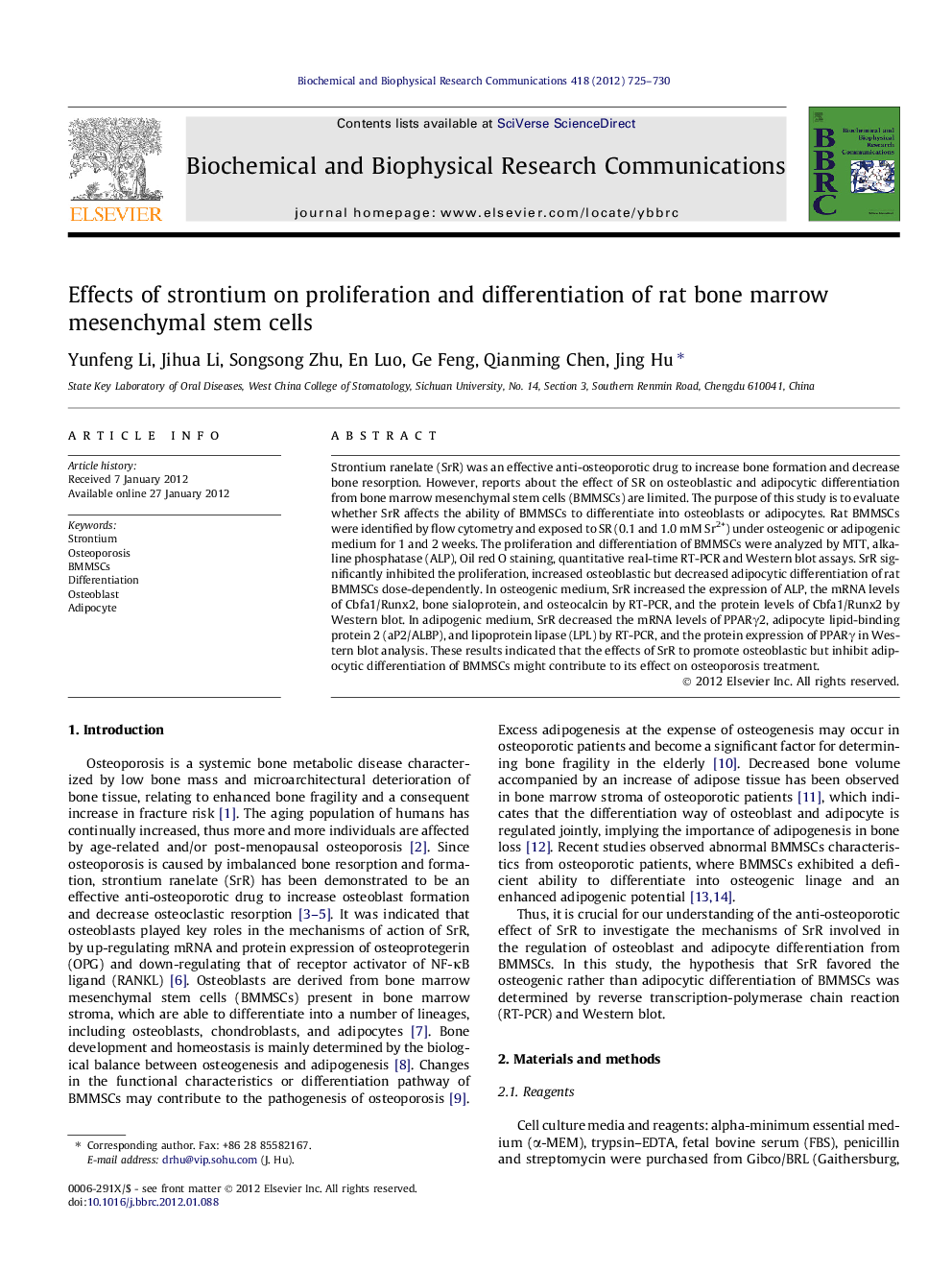| Article ID | Journal | Published Year | Pages | File Type |
|---|---|---|---|---|
| 1929901 | Biochemical and Biophysical Research Communications | 2012 | 6 Pages |
Strontium ranelate (SrR) was an effective anti-osteoporotic drug to increase bone formation and decrease bone resorption. However, reports about the effect of SR on osteoblastic and adipocytic differentiation from bone marrow mesenchymal stem cells (BMMSCs) are limited. The purpose of this study is to evaluate whether SrR affects the ability of BMMSCs to differentiate into osteoblasts or adipocytes. Rat BMMSCs were identified by flow cytometry and exposed to SR (0.1 and 1.0 mM Sr2+) under osteogenic or adipogenic medium for 1 and 2 weeks. The proliferation and differentiation of BMMSCs were analyzed by MTT, alkaline phosphatase (ALP), Oil red O staining, quantitative real-time RT-PCR and Western blot assays. SrR significantly inhibited the proliferation, increased osteoblastic but decreased adipocytic differentiation of rat BMMSCs dose-dependently. In osteogenic medium, SrR increased the expression of ALP, the mRNA levels of Cbfa1/Runx2, bone sialoprotein, and osteocalcin by RT-PCR, and the protein levels of Cbfa1/Runx2 by Western blot. In adipogenic medium, SrR decreased the mRNA levels of PPARγ2, adipocyte lipid-binding protein 2 (aP2/ALBP), and lipoprotein lipase (LPL) by RT-PCR, and the protein expression of PPARγ in Western blot analysis. These results indicated that the effects of SrR to promote osteoblastic but inhibit adipocytic differentiation of BMMSCs might contribute to its effect on osteoporosis treatment.
► Strontium ranelate (SrR) inhibits proliferation of BMMSCs. ► SrR increases osteoblastic but decreases adipocytic differentiation of BMMSCs. ► SrR increases expression of Runx2, BSP and OCN by BMMSCs in osteogenic medium. ► SrR decreases expression of PPARγ, aP2/ALBP and LPL by BMMSCs in adipogenic medium.
